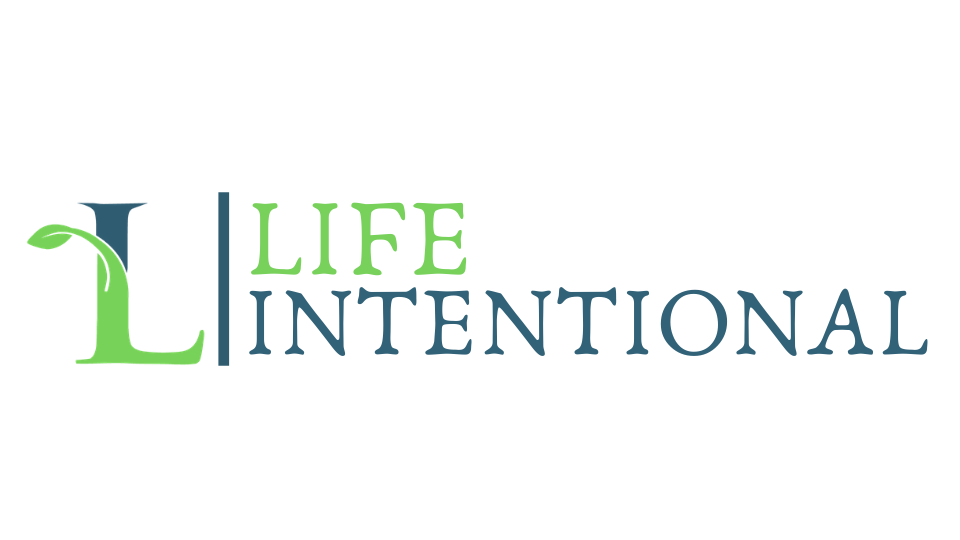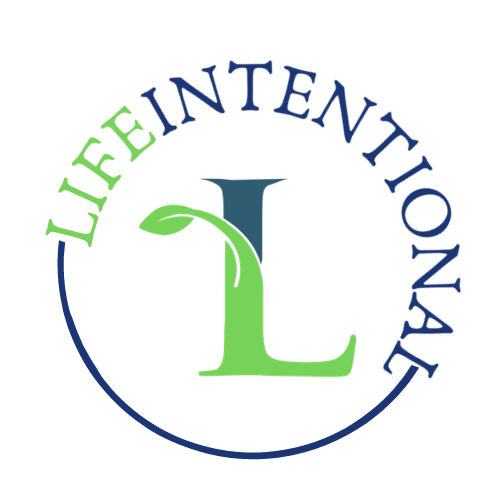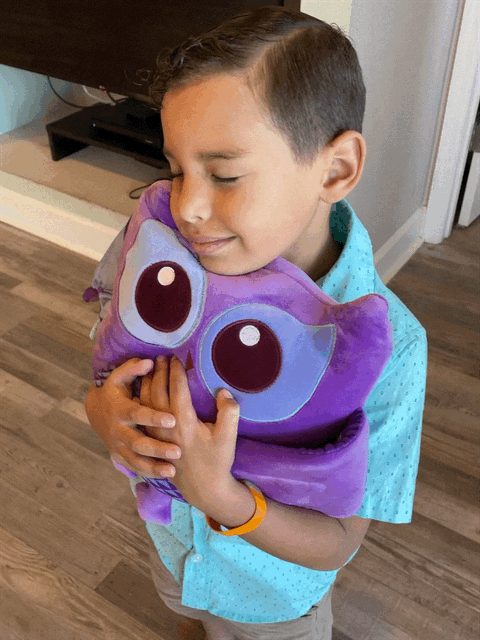A MUST Have Powerful Tool to Help your Child with BIG Emotions
By Jenny Trimble, RN BSN
A MUST HAVE Powerful Tool to Help your Child with BIG Emotions
Are you dealing with your child having constant meltdowns or fits of rage? I want to share with you a powerful tool that has helped our family tremendously and still does when it comes to taming a tantrum and teaching self-regulation.
Disclosure: This post may contain affiliate links that at no additional cost to you, I may earn a small commission. I only recommend products that I have or would personally use myself.
According to a study done by Harvard, young children are capable of surprisingly deep and intense feelings of sadness (including depression), grief, anxiety, and anger (which can result in unmanageable aggression), in addition to the heights of joy and happiness. 2
Unfortunately, we are not born with the skills required to MANAGE and control our behaviors. We’ve had to LEARN them, and our role as parents’ or caregivers is to teach our children how to manage their emotions and behavior.
When our kids misbehave, sometimes there is an unmet need that they have like; hunger, tired, overstimulated and so on.
Other times it may be that your child is just having a hard time managing all the big emotions going through his/her brain and body.
Did you know that approximately 90% of your child’s brain is developed in the first five years of their life? Crazy right?! I wish I had someone reminding me of this at least once a year when the kids were younger.
Teaching our children emotional regulation is important because in short, the ability to regulate one’s own emotions and manage successful interactions with other people is KEY for improving relationships, facilitates the feeling of community, improves later academic performance, and mental health, which provide an important foundation for a fulfilling life.1,3
During toddler hood we learned that our daughter Anabelle was definitely born with some BIG EMOTIONS. She was a super easy baby but if something upset her, she had big tantrums and meltdowns.
Many meltdowns later, in first grade, we learned that she struggles with mild generalized anxiety.
I’m still learning so much, but according to the Child mind institute, children with ADHD or anxiety may have a challenging time managing their emotions and need extra help to develop skill to regulate their emotions.
In other words, it made so much sense that since she struggles with anxiety she also struggles with anger management.
To our blessing, I discovered the “calm corner” when Anabelle was 3 years old. At the time I just didn’t know at the time how impactful this was going to be.
“THE CALM CORNER IS A POWERFUL TOOL TO HELP YOUR CHILD LEARN TO MANAGE THEIR BIG EMOTIONS, MINIMIZE AND EVEN PREVENT MELTDOWNS”
WHAT IS IT?
The calm corner is a little area that you set up in your home where the main intent is to be a safe space for your child to go when their emotions are high and they need to regain emotional and physical control. Here they will practice identifying feelings and emotions to better manage stress, self-regulate and control their impulses.
HOW TO SET UP:
You make the area cozy and provide comforting toys, soothing materials like a soft blanket/rug and things that provide mindfulness, relaxation and reflection.
Ours was simple. We had a cute tiny white chair in a corner by a window that got lots of sunlight. (Your calm corner does not have to be in a corner). I had a small mirror on the wall and our special calm caddy with some sensory toys.
HOW WE USED IT:
Anytime she’d be at the start of a meltdown I’d suggest for her to go to her calm corner or to “take a break”. This mostly went over well, because she loved her calm corner and she got to choose from several little self-soothing sensory toys or activities to distract her help her to integrate her upstairs and downstairs brain.
Implementing this calm corner helped prevent so many tantrums, recover from the ones she did have quickly AND helped ME not “lose my mind “many times over.
WHAT WE HAD IN OUR CALM CADDY:
Sensory balls I made with balloons. I drew different emotions on them and filled them with different things from the pantry. Flour/rice/popcorn kernels and quinoa (her favorite).
A little Slinky
Lavender scented flower
A few family photos (Research has shown that when kids see a photo of their trusted adult, it helps calm them.)
Emotions/feelings cards
Smooth stones
Battery operated candle for her to practice taking deep breaths and blowing out.
Below I’ve added the products that I would personally love to get to create the ULTIMATE calm corner…BUT my suggestion would be offer just a few distraction items at a time, otherwise it can be overwhelming when they are already overwhelmed by their big emotions.
HOW TO USE THE CALM CORNER:
Make it comfortable and inviting. It should be a place that your little one will want to go to.
Introduce your child to the calm corner and teach them between 2-4 calm down strategies to start with.
*It’s important that you DO NOT use the calm corner as a “time out” or punishment.
EXAMPLE OF WHAT WE DID:
We had an artificial flower that I sprayed lavender scent on. I had her practice taking a deep breath in through her nose smelling the flower and then blowing it out slowly through her mouth.
We practiced taking deep breaths and then blowing out our fake candle.
We looked through different emotion cards and talked about what feelings they expressed and talked about any that she thought matched her own feelings.
The rest of the items in the calm caddy were little sensory tools that she could choose what she wanted to play with during her quiet time in the corner.
My daughter is now 8 years old, so our calm corner has evolved. We now have a calm down binder that has different activities and journal questions to help her process her feelings. She will typically go to her bedroom where she has a comfy chair or the front room to remove herself from the situation and process her feelings/mood. What’s wonderful is that she most always comes out with changed behavior for the better!
Here is an example of one of the worksheets she filled out that we have in her binder that I found on Pinterest.
Intense right? I would show you the one she wrote about me but it’s pretty LOUD “lol
I’ve created my own printable to use for calm caddy or anger management binder. If you’d like access, sign up below.
This calm corner/calm caddy is such a powerful tool that has truly helped our daughter and saved my sanity I hope it helps you too!
Below I will share some the books that are currently in our Library along with their favorite plushies. P.S. Those books by Joy Berry are excellent! She has written one of most of the character issues we can have with our children.
NEW DISCOVERIES:
This year we discovered Generation Mindful. It is a pretty awesome resource to help you teach your child self regulation.
I purchased one of the snuggle buddies for our son Desmond and he loves it so much! We got Intuition owl and I love the little emotion pillows that are attached to it. Each little color represents a different emotion. If I would have learned about this site years ago, I would have gotten one for Anabelle.
Our son, Desmond is pretty much just a happy kid most of the time so we haven’t had to focus our energies on teaching him emotional regulation. I should say, I didn’t see it as a high need. Well, this year I realized we focus a lot on our daughter and haven’t really practiced any of the skills with him. So I decided to be more intentional of teaching him some of the same skills.
To our surprise, the past couple of weeks he has been expressing himself so much more than normal! We are empowering our children when we teach them emotional literacy!
CALM DOWN CORNER HELPS TEACH:
Emotional intelligence
Self-regulation
Self-Awareness
Mindfulness
That Emotions are OK
Skills in empathy
Stronger communication skills
Healthy ways to cope with big emotions
Implementing the calm corner in your home allows your child/children to develop ways to express their emotions that are more effective and less disruptive than having a meltdown which can lead to a more fulfilling life as they mature. 3I’d love to hear from you! Do you have a calm corner in your house?What have you found is your biggest challenge of having a child with BIG emotions?
REFERENCES:
1. Thompson, R.A., & Lagattuta, K. (2006). Feeling and understanding: Early emotional development. In K. McCartney & D. Phillips (Eds.), The Blackwell Handbook of Early Childhood Development (pp. 317-337). Oxford, UK: Blackwell.
2: National Scientific Council on the Developing Child (2004). Children’s Emotional Development Is Built into the Architecture of Their Brains: Working Paper No. 2. Retrieved from www.developingchild.harvard.edu.
3: Early Child Development and Care Volume 188, 2018 - Issue 7: Young Children’s Emotional Experiences https://childmind.org/article/can-help-kids-self-regulation/

































